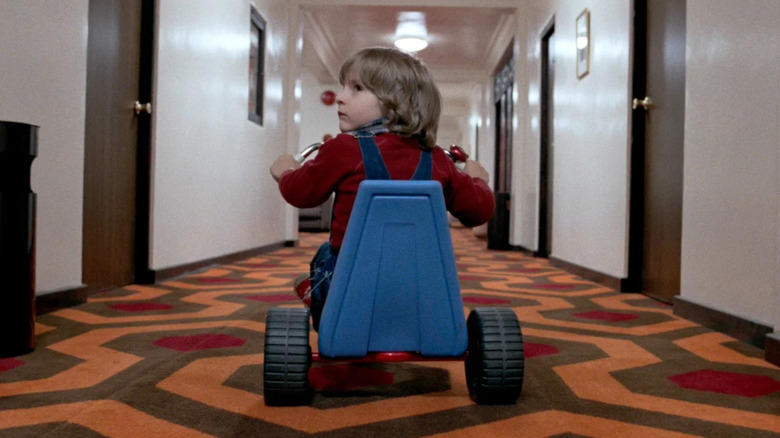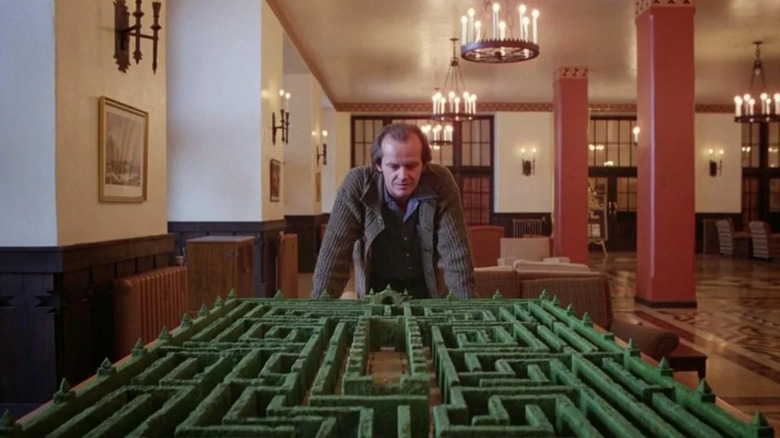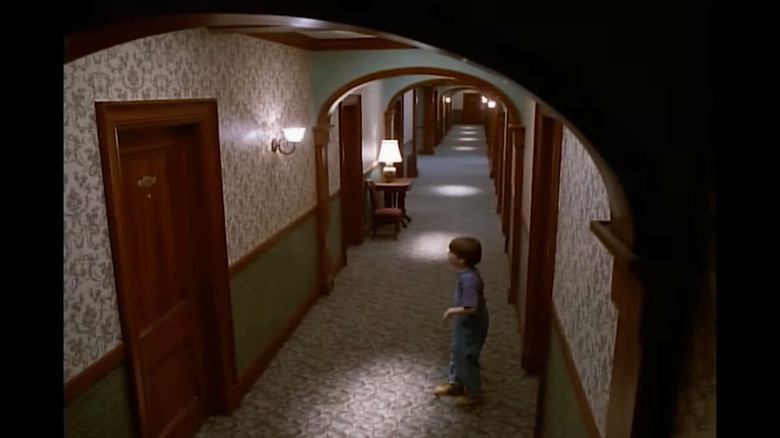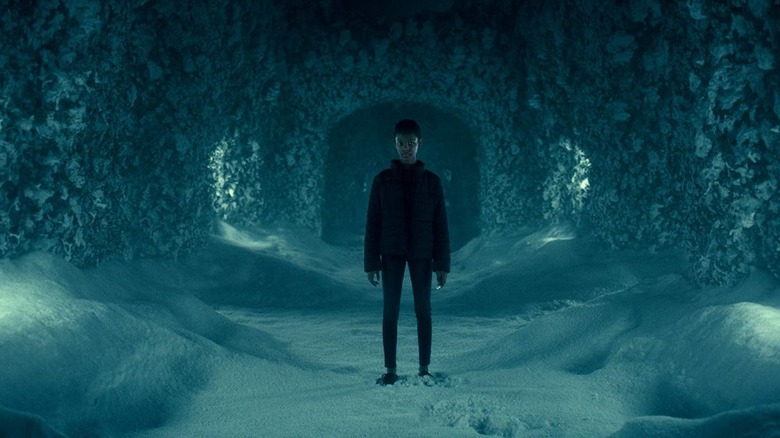Where Was The Shining Filmed? Every Major Location, Revealed
As horror locations go, the Overlook Hotel might be one of the most iconic landmarks in the genre. Filled with creepy hallways, empty banquet halls, and a bathroom occupied by a guest well overdue on her check-out time. Even so, the unnatural accommodation that acts as the center point for Stephen King's "The Shining" and the novel's Hollywood adaptations is a spot fans love to revisit on an annual basis, with some even searching out the real-life landmarks that stood in for the scary getaway that takes the life of Jack Torrence, as well as some other unfortunate guests.
But where on earth did the daring storytellers that brought King's classic tale to the big- and small-screen pick to call home for their version of "The Shining?" What piece of land was evil enough to home the hotel that comes with a complimentary ax and a hefty dose of insanity? Well, when it came to Stanley Kubrick's beloved iteration, the legendary director shot at several different places, including one that was also used in another absolute masterpiece as a favor to another revered director.
Stanley Kubrick's location choice for The Shining also made it to Blade Runner
While it's well documented how Stephen King really felt about Stanley Kubrick's "The Shining," the rest of the world thinks quite fondly of it. Deemed as one of the best horror films ever made, a lot of the credit must go to the film's primary location, which literally gushes with terror. For the Overlook Hotel, Kubrick had interior sets built for the entire establishment and shot them at EMI Elstree Studios in Hertfordshire, England. The Overlook's iconic interior design was inspired by the Ahwahnee Hotel located in the Yosemite National Park.
When it came to the Overlook's exterior shots, however, the Timberline Lodge in Oregon stood in for King's haunted hotel. For the iconic opening aerial sequence, a helicopter flew around Glacier National Park in Montana, a locale that made its way into not just "The Shining," but another movie as well, as a favor for a director who himself was in the process of making one of the greatest science fiction films ever made.
When Ridley Scott was working on the initial theatrical cut of "Blade Runner," the filmmaker was getting heat from the studio to round things off with a happy ending. Struggling for ideas, he asked Kubrick for any leftover footage for the iconic helicopter footage, which the auteur happily shared. "[The] next day, I had 17 hours of footage from 'The Shining.' It made the preview much better,'" Scott told the ReelBlend Podcast. "I then had to go back [to Stanley] and say, 'Can I buy it?' So 'The Shining' footage in the first release of 'Blade Runner.'"
Stephen King found a perfect spot for the 1997 adaptation of The Shining
When the time came for another attempt at Stephen King's spine-tingling story to make it back on screens, the author had far more input on the project than before. Unlike Kubrick's effort, King actually wrote the screenplay for the 1997 TV miniseries directed by Mick Garris, which ended up visiting the one place that Kubrick's film never ventured to – the hotel that was the actual inspiration for the Overlook.
Ironically named the Stanley Hotel, this mountain getaway was the stand-in for the miniseries' version of the Torrence's family's hellish home away from home. Built in 1909, the hotel also acted as a location for "Dumb and Dumber" in 1994 but has garnered a supernatural reputation of its own outside of King's book.
Over the years, the hotel has been tagged as one of the most haunted hotels in the U.S., including photographic evidence of ghostly forms appearing out of thin air. Coincidentally, the hotel's history includes an event that eerily echoes the fate that befell Jack in King's book; in 1911, a gas explosion led to the hotel being damaged and eight people being injured. When it came time to revisit the Overlook Hotel for the massively underrated sequel to "The Shining," "Doctor Sleep," in 2019, director Michael Flanagan returned to where general audiences first watched King's tale unfold on the big screen and woke up the original Overlook.
Doctor Sleep headed to Atlanta to get back to The Overlook Hotel
In an effort to honor both Kubrick's staple of cinema and the book that inspired it, Mike Flanagan did the unthinkable and pulled out a banger of a legacy-quel with "Doctor Sleep." The film cast Ewan McGregor as Danny Torrence, older, a little wiser, still wielding the Shining, and being drawn back to where the horror began. Flanagan modeled his Overlook Hotel on the one audiences visited in 1980, with its iconic carpets and long, deathly, unsettling halls providing the setting for the ending of "Doctor Sleep."
For the exterior and interior of the burnt-down Overlook Hotel that Flanagan drags Danny, Abra, and the audience back to, the soundstages of Blackhall Studios were used. Swapping Hertfordshire for Atlanta, Flanagan rebuilt the hellsite in painstaking detail. This became a massive ordeal for the filmmaker, who applied a level of perfectionism that even Kubrick might've been impressed by. During a set visit for "Doctor Sleep," Flanagan revealed that he used the exact blueprints for his set designs that were first used by Kubrick and then kept in storage at Warner Bros. Doing so ensured that the nightmare that was born in Elstree Studios in 1979 was revived to pulse-pounding perfection in Atlanta 40 years later.



